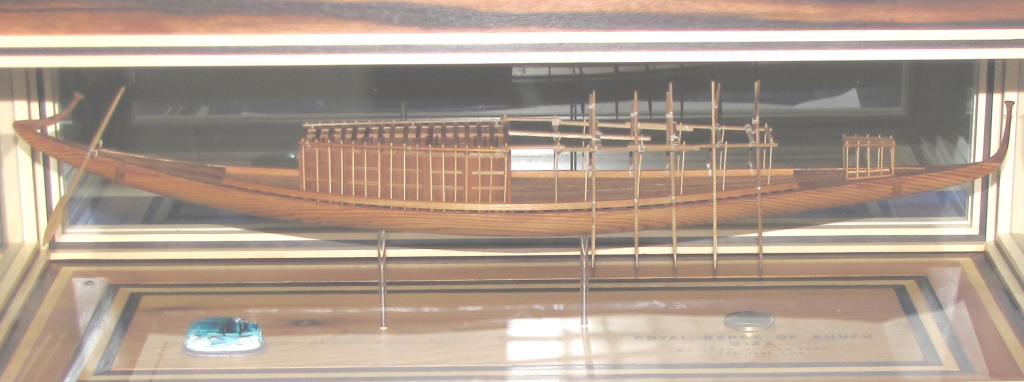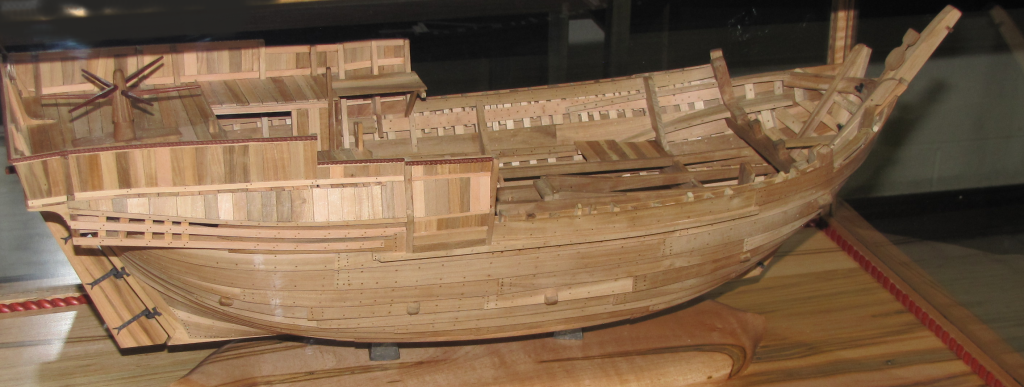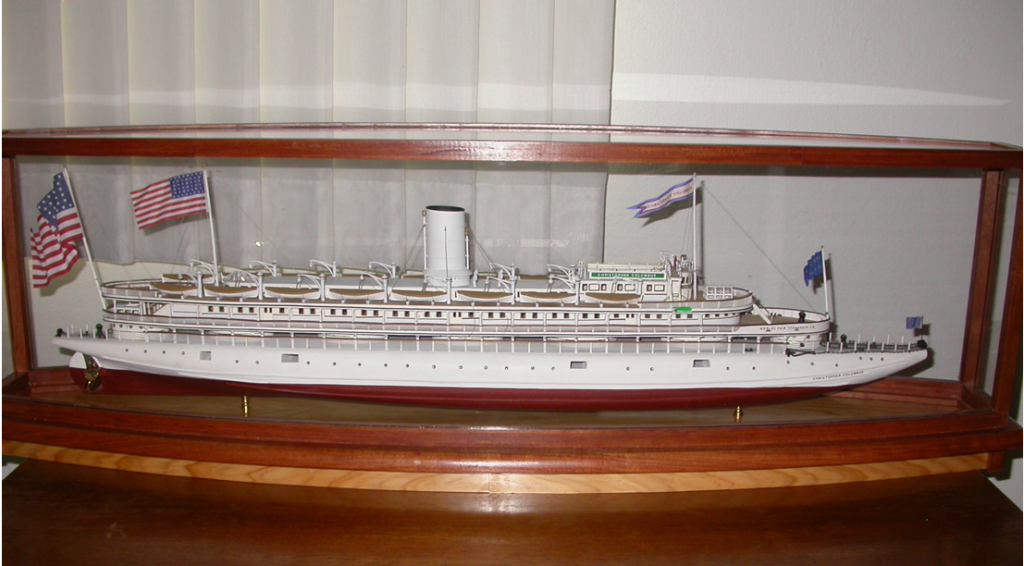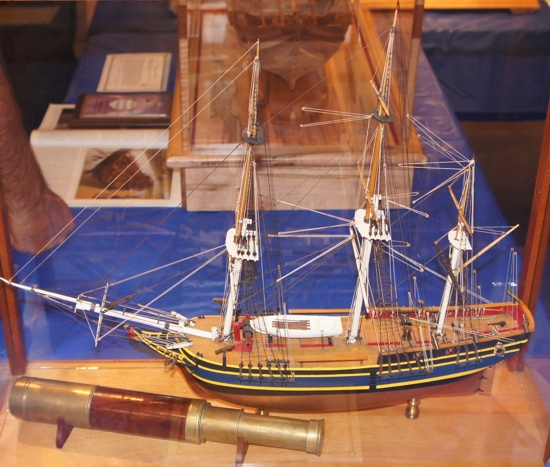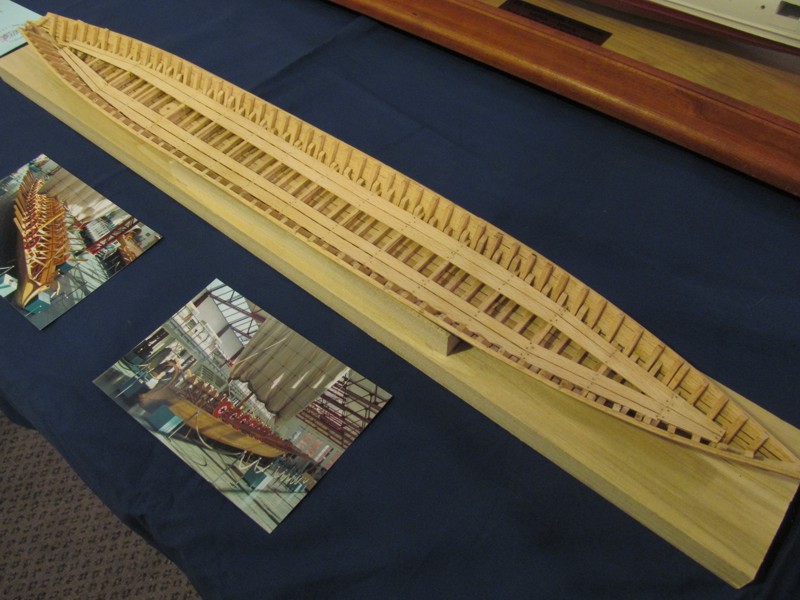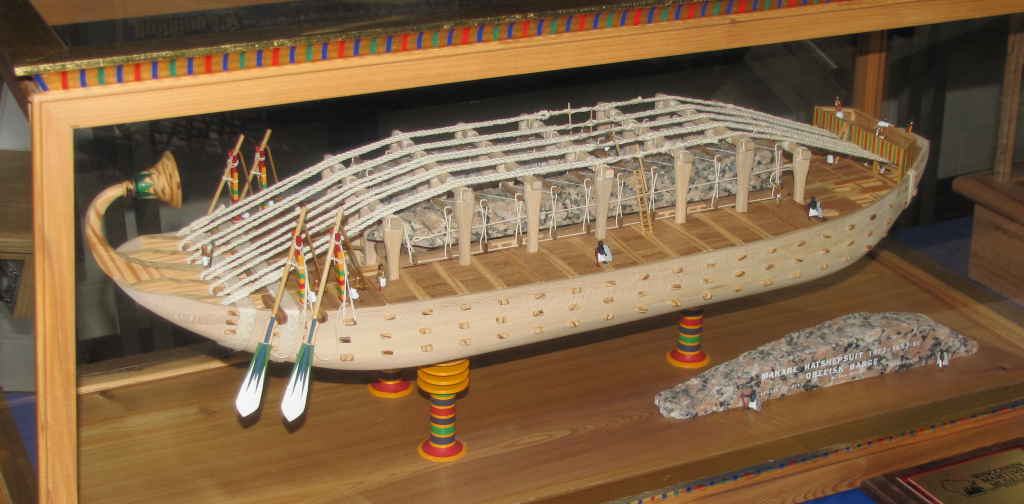
Description of model
This model was scratch–built by John McGann. He produced the drawings from Bjorn Liandstrom’s book, Ships of the Pharaohs. The obelisks are pink granite from the quarry in Aswan from which the original obelisks were fashioned. The model is constructed of sycamore just as the original barge was.
History of the ship
The barge was used to transport two 98-feet long granite obelisks from Aswan to Karnak. The ship is depicted on the wall of Hatshepsuit’s funerary temple, Deir El Bahri.
Scale: 1/8” 34” x 14” x 15

